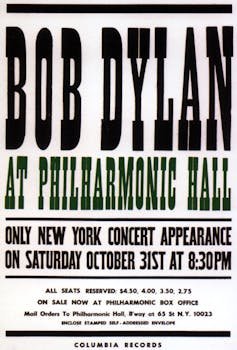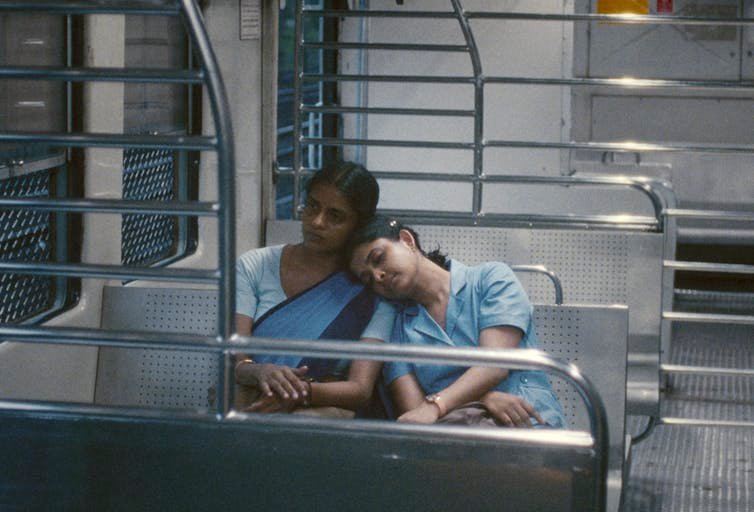While movie premieres and A-list celebrities attract most of the attention at the Toronto International Film Festival (TIFF), the future of film is debated in the TIFF Industry conference.
As one might expect nearly two years after the public release of OpenAI’s ChatGPT, AI in filmmaking has featured among the industry talks. But perhaps more significant have been presenters’ emphases on how AI and other new technologies are shaping audience experience at the movies.
Talk topics at the conference also included “Amplifying The Audience Experience — How Technology Is Changing Cinema’s Future,” a session focussed on new projection and audio technologies for cinemas, and improving audience accessibility.
Amid such discussions, it’s clear that movie theatricals — films screened in physical theatres instead of streaming online — have an audience problem.
To understand this challenge in historical context, Taylor Mackintosh, a York Cinema and Media Arts student (BFA 2024), and I examined the history of movie audiences and their attendance in cinemas.
As the film industry competes for viewers’ attention and audiences’ limited leisure dollars amid the looming threat of AI, fan buzz at TIFF as well as the TIFF panel discussions hint at something larger: that cinemas may be returning to earlier history by attending carefully to people’s embodied and multi-sensory experiences at the movies.

Overall ticket sales decline
The successes of hit summer films such as Inside Out 2 or other recent hits like Oppenheimer, Barbie and Top Gun: Maverick, can look like anomalies, as movie ticket sales continue a more than 20-year decline.
Movie ticket sales in North America peaked at roughly 1.5 billion in 2002 declining to 1.2 billion in 2019, according to Statista, a data gathering and visualization plaftorm.
While there has been some recovery from pandemic lockdowns, changing viewer habits may be affecting in-person attendance, while industry strikes also slowed down projects.
According to Nash Information Services, in 2024, cinema tickets sold declined from roughly 830 million in 2023 to 760 million tickets in 2024 in North America, little more than half of the 2002 peak. Overall, moviegoing in North America declined roughly 67 per cent from 2019 to 2023.
Gen Z boosts
One encouraging sign is that in 2020, more than 60 per cent of Gen Z audiences reported watching a movie every week and people from this demographic continue to be cinema’s most habitual moviegoers.
Younger audiences are driving attendance. These audiences access arts and culture first digitally, but they also care about the overall experience, including physical, social and experiential dimensions of events.
A Vice Media/Ontario Creates report on Gen Z noted that 78 per cent of this demographic consider social media their primary source for finding cultural content. But they often prefer in-person experiences, and they’re willing to pay more if they feel it’s an experience they couldn’t get elsewhere.
Read more:
COVID-19 has rekindled a ‘back to the future’ love of movies

(Paige Dingler/The News & Advance via AP)
Recorded media, live performance
Perhaps it is no surprise that events combining elements of recorded media and live performance experiences have been successful. The Taylor Swift: Eras Tour (2023) movie became the highest grossing concert film of all time, perhaps in part because movie theatres allowed audiences to dance along with the film and to record themselves within the experience.
Popular immersive experiences drawing on familiar content in art — like Immersive Van Gogh and World of Banksy — similarly capitalize on the hybrid experience of popular media presented as an embodied experience.
Television and movies are exploring this format too. Immersive Disney Animation surrounds audiences with animated favourites in its two-storey projection room and provides interactive projections on the walls and floor. The Queen’s Ball: A Bridgerton Experience offers guests the chance to interact with actors dressed in period costume amid live music.
Growing immersive, multimedia experiences
Today, popular entertainment is trending toward what we might call the theatricalization of media.
Take, for example, the Netflix series Stranger Things. The series revisits 1980s popular culture, including visual and narrative references to everything from Indiana Jones to hair bands. Now in production for season five, the streaming series has been offered as Stranger Things: The Experience and is headed for Broadway as Stranger Things: The First Shadow.
Look around and you’ll see the terms “experience” and “immersive” proliferating across media platforms. Along with Fever Productions’ numerous media-based experiences, the narrative film Trap (2024) was recently billed as “A New M. Night Shyamalan Experience.”
The TED talk by media artist Willie Williams about his collaboration with U2 for an immersive concert film shown in Las Vegas has been viewed more than 400,000 times on the TED site. By March 2024 U2 sold more than 700,000 tickets for the interactive experience.
As Williams describes it, the technical possibilities of an immersive media venue like the Sphere create novel artistic opportunities where an audience’s sensory perception is being choreographed by the artist.
Of course, both theatre and cinemas have always attempted to shape the audience’s sensory experience. Sometimes this took the form of novel technologies, such as the introduction of colour cinematography in 1929 and the IMAX (image maximum) format in 1970.
Embodied experience at the movies
But some of the most effective examples of audience experience in cinema have had little to do with screen technologies. During the Great Depression, struggling movie theatres offered audiences popcorn and air-conditioning to encourage attendance by a cash-strapped public.
Popcorn was a relatively cheap but filling snack that eventually became a staple of both the movie-going experience and the business model in North America. Air-conditioning was a rare luxury that combined with popcorn, newsreels and the escapist entertainment of the films themselves offered an affordable respite during the financial crisis.

THE CANADIAN PRESS/Christopher Katsarov
Multi-sensory cinematic experiences
Today, we see similar trends in movie-going habits. In a challenging financial context of both technological change and a changing climate, cinemas offer newer attractions and perks such as VIP experiences and luxury seating, as well as simple air conditioning in a sweltering summer.
Such trends suggest that the future of cinema may look a lot like its past. Or, in the words of the great film and theatre songwriter, Peter Allen, “everything old is new again.”
Taylor Mackintosh, who completed a York University BFA in Cinema and Media Arts Production, co-authored this story.










